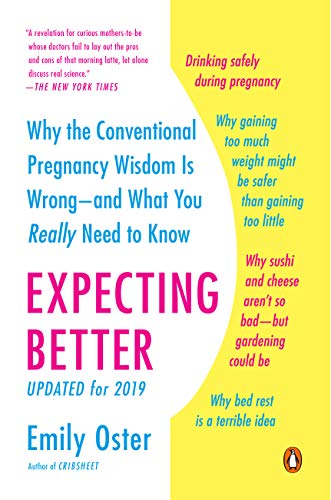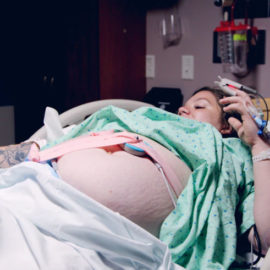

This article is an excerpt from the Shortform summary of "Expecting Better" by Emily Oster. Shortform has the world's best summaries of books you should be reading.
Like this article? Sign up for a free trial here .
Birth plans are short documents that describe what you want to happen during your birth and what treatments you’re willing to accept in which situations. OBs and nurses have a slight aversion to them because they may signal some inflexibility to do what they think is best in critical situations.
But Oster argues it’s far better to think about hard decisions and articulate your preferences beforehand than to come up with them on the fly.
Here are the elements of Emily Oster’s birth plan:
- Avoid inducing labor. If water breaks before contractions start, wait 12 hours and induce labor only if labor has not started by then. In this scenario, avoid digital vaginal exams unless necessary.
- If the water breaks and the mother doesn’t go into labor for too long, risk of infection is higher. Digital vaginal exams increase the risk of infection.
- Inducing labor with pitocin induces stronger contractions and may make it harder to go without an epidural.
- I will drink water during labor.
- Doctors fear gastric aspiration, where patients under general anesthesia (historically used for C-sections) vomit and inhale solids into the lungs and suffocate.
- However, nowadays C-sections are performed with local anesthesia 90% of the time. And the risk of maternal death from aspiration is 2 in 10 million births, or 0.2% of all maternal deaths.
- Regardless, most hospitals will still prohibit solid foods.
- Gatorade during labor reduces maternal ketosis.
- Our doula will be with us.
- Doulas are birth companions who accompany the mother throughout the labor process, keeping a relaxed atmosphere and suggesting changes like walking around. They also give a postpartum visit.
- Research shows doulas reduce risk of C-section by half and reduce use of an epidural or forceps in delivery.
- Oster thinks having one was one of her best pregnancy decisions.
- Monitoring should be done intermittently or mobile, not continuous or immobilized..
- Doctors want to track fetal heart rate to detect fetal distress. >85% of women have monitoring during labor.
- Options for type or monitoring include immobilizing monitoring, portable monitoring, or an internal monitor (that’s threaded through the cervix and screwed into the baby’s scalp).
- Options for style of monitoring include continuous, or intermittent listening.
- Continuous monitoring leads to much more intervention, increasing C-section risk by 60% and use of instruments, but without any difference in baby outcomes (APGAR scores, NICU admissions). Oster argues this is because continuous monitoring leads to false positives about fetal distress.
- Some hospitals may have a non-negotiable policy on monitoring.
- If labor progression is slow, we prefer augmentation by amniotomy (breaking water) first, then Pitocin.
- Both interventions generally don’t have other complications like increasing risk of C-section.
- Oster preferred Pitocin last because of increased pain in labor and increased risk of C-section.
- No routine episiotomy.
- An episiotomy is cutting the perineum between the vagina and the anus. The logic goes, if there’s a controlled cut there, we can control the tearing.
- However, Oster uses the analogy of ripping a cloth in half – is it easier on an intact cloth or one that already has a rip?
- This used to be common, used in 60% of births in 1979. However, studies showed increased bleeding and slower healing, and so episiotomies dropped to 25% by 2004.
- This is useful to check with your OB well ahead of time in case there are large philosophical differences.
- Pitocin in the 3rd stage is fine if necessary/recommended.
- Pitocin reduces risk of severe blood loss after labor. However, it also increases maternal blood pressure, pain after birth, and vomiting.
———End of Preview———

Like what you just read? Read the rest of the world's best summary of "Expecting Better" at Shortform . Learn the book's critical concepts in 20 minutes or less .
Here's what you'll find in our full Expecting Better summary :
- Why much parenting advice you hear is confusing or nonsense
- The most reliable way to conceive successfully
- How much alcohol research shows you can drink safely while pregnant (it's more than zero)
- The best foods to eat, and what foods you really should avoid






